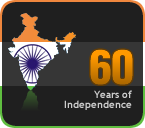 Nepal is also known by two other alternate names. One is Mountain kingdom and another is the Royal kingdom. The first name is quite obvious. The reason for being called by the second name is both interesting as well as worth recounting here.
Nepal is also known by two other alternate names. One is Mountain kingdom and another is the Royal kingdom. The first name is quite obvious. The reason for being called by the second name is both interesting as well as worth recounting here.I know you might have already guessed it. Nepal is (was?) ruled by a system of monarchy. That is one of the reasons for it to be called as a Royal kingdom. But what many people do not know is that just a few years back, like today, Nepal was not ruled by a single king. Nepal in itself was divided into four different “kingdoms”. Katmandu, Patan, Basantnagar and Bhaktpur (I might be wrong in the historic details – No offence intended). From what I have heard, the king of Katmandu once climbed on the top on the highest mountain of his kingdom and looked towards other kingdom. He found the other kingdoms to be soo beautiful that he wanted it for himself. It is then that he attacked the other kingdoms. After facing defeats four times, he finally succeeded in conquering all the other three kingdoms. Thus came into existence the Royal Kingdom of Nepal. This stands even till today.
As is said aptly, once person’s victory means another persons defeat. The development and governance in the other three kingdoms came to a standstill after the victory of the king of Katmandu. The palaces of the other king were left unattended. This has come as a blessing in disguise for the tourists. These palaces have now become a “snapshot” into the past. They are beautiful and splendid even in apparent age. The seat of power in all these kingdoms used to be called as Durbars. This could be compared to our present day’s Rajpath in India. It consisted of the place, the temple of the main Deity, the court and the main market. I think it would just suffice if you have a look at the attached photograph. This is the marvelous – Patan Durbar square.
Just stepping into Patan Durbar square makes you feel as you are transported into another era. The buildings, the small roads and the temples give you a feeling that at any moment a king might come out of any of the doors. You have to experience it to feel it. It is very difficult to explain in words.
The best thing I like in Patan durbar square is the “Museum behind the golden gate”. The golden gate here refers to the gate the place of the king of patan. This beautiful palace has now been converted into a museum dedicated to Hindu and Buddhist religion. I must say for a person trying to understand more about Hinduism and Buddhism it is a treasure trove. With the help of some splendid idols and clearly written comments, it takes you logically into the depths of religion. For example, one might have thought why image worship? And if we worship, why are the idols of Hindu and Buddhist Gods so inhuman (three heads, 6 hands, vertical eyes and what not)? Well the idol is a way to help the seeker visualize god. It is to help him focus his energy and concentration on something material which helps him to take a divine path. It is like the photo of your Mom/Dad/Husband/Wife/Girlfriend/Boyfriend that you keep close to your heart when you are away from them. And as far as the inhuman nature of these Idols goes, they are so because, after all God is super human. For example from a point of what God does he is - provider, destroyer, enabler, Judge, Father of the universe, and much much more. How can such a person have only two hands, a head and a pair of eyes like a “normal” human??? These Idols are just a proof of man’s struggle to understand God better. There is much much more I learned behind the golden door. But I know I am already sounding like a pundit straight out of a religious book, so I will stop here.
A stone throw away from Patan durbar square is the kumbakeshwar temple (Shiva temple) and the Golden Pagoda. Both are so wonderful, majestic and mystic that I don’t even have words to express. I felt strange warmth in both these places. There are some things words cannot express. You have to feel it to know it. These places are amongst them.
I have also visited Pashupatinath temple, Nagarkod and Dundikel. More about it in my next blogs :-)



No comments:
Post a Comment